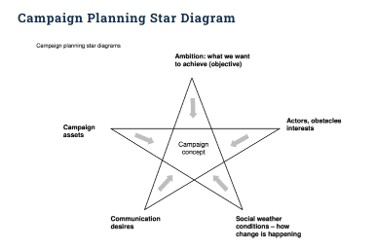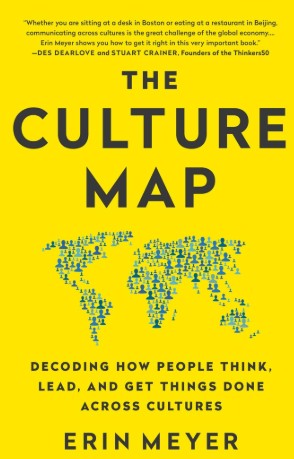
These two articles on the growth of MarTech in professional services were published in the February and March 2020 editions of Professional Marketing Magazine.
Wouldn’t it be good if there was a central source of information about marketing automation and technology (MarTech) in professional services – whether in law, accountancy, surveying or consultancy practices and for both large and small firms?
A PM leader article I wrote last year sparked the idea as many readers subsequently contacted me to talk about MarTech, marketing eco-systems and marketing stacks. For 15 years the most searched-for posts on my own blog relate to the impact of technology on marketing. So I have attempted to provide an overview of the main MarTech systems in use in the professions.
The first article focused on integrated systems for client relationship management (CRM) and the second looks at collaboration, communication, digital and social media marketing tools and sales automation. Both articles on were posted on the PM Forum social media sites so you can add comments, details of the systems you use and we can continue the debate. Otherwise add comments below and I’ll do an update in due course.
The growth of MarTech
Campaign magazine recently reported on research by BDO and Warc that found the global marketing technology market has grown 22% to an estimated £85 billion, with the UK and US accounting for more than half of its value.
Scott Brinker, editor of a blog started in 2008 at Hubspot argues that “Marketing has become a technology-powered discipline, and therefore marketing organizations must infuse technical capabilities into their DNA”. The time is ripe for the emergence of Professional Services Marketing Technologists.
In April 2019, the Martech 5000 identified 7,040 marketing technology systems across six categories including: advertising and promotion, content and experience, social and relationships, commerce and sales, data and management. Although many of these systems are only appropriate in consumer marketing.
There are numerous events about MarTech including the annual Technology for Marketing event in London each September. But as far as I know there isn’t an event specifically for the professions although Netlaw organises the annual legal technology awards.
Client Lifecycle Management (CLM)
I guess the most impressive system I have seen is Intapp. It’s a firm-wide integration platform rather than MarTech but it offers an incredible array of facilities that marketers and business developers will relish.
Intapp enables you to interrogate all of your firm’s data – regardless of the system where it is held. You can search narratives on time recording, invoices and documents emailed by fee-earners. It integrates information from external proprietary sources (e.g. Dun & Bradstreet and Manzama news).
It prompts fee-earners to provide details of clients and transactions where data are missing. It enables sophisticated analysis to support pricing decisions and profitability improvement. It uses DealCloud for managing complex relationships and allows relationship map visualisation. By using artificial intelligence (AI) and machine learning, it’s Trendline reporting spots issues with clients early and it highlights trends it detects.
Intapp recently acquired OnePlace which supports prospecting, campaign management, bid management, proposal generation, directory submissions, referral management, maturing relationships, cross-selling, client surveys, exception management and key account management (KAM). It visualizes “white space analysis” – using firm data to uncover cross-selling opportunities. It also acquired Gwabbit which automatically scrapes information from emails. Intapp produces smart lists of key relationships and automatic client profiles and reports when it detects imminent meetings in Outlook calendars.
Integrated practice management systems (PMS)
Many firms use the client relationship management (CRM) facilities within a broader practice or case management system.
Tikit is one such integrated practice management system that offers integrated automation including Connect CRM emarketing facilities, PitchPerfect for tenders and Introhive for data capture and relationship analytics.
Lawfushion by Select Legal Systems is another established system with a CRM that includes workflow functionality for sales, marketing and customer service procedures and has campaign management, quotations, “slice and dice” list building and eshotting, lead handling and a GDPR manager. It’s all available on a mobile app too.
Other marketing modules within integrated practice management systems include Peppermint, Adherant and Clio.
Client Relationship Management (CRM)
CRM systems and databases come in all different shapes and sizes. Some of the more popular mainstream systems adopted in professional services include: Salesforce, Microsoft’s Dynamics, SalesLogix, SugarCRM and Maximiser. Soffront, a CRM system primarily for managing customer complaints, communication, customer assets and maintaining product catalogues is used by technology companies and some consultancies.
There are a large number of law firms using InterAction.
A spokesperson at Lexis-Nexis commented “The InterAction portfolio empowers firms by embedding CRM data within the natural workflow of users. Recently, InterAction launched a unique Hybrid Cloud offering that delivers all the benefits of an application in the cloud whilst retaining the choice and security over where firms’ data resides. The first module to be hosted is InterAction for Office 365, which embeds CRM data into users’ natural flow of work across Microsoft® Outlook, Excel, and Word. This helps increase user adoption, improve data quality and save billable hours. InterAction has expanded reporting capabilities enabling you to present core CRM data in Microsoft Power BI (business analytics that visualises and shares insights). Firms can also leverage the standard Power BI reports in InterAction Business Edge, a business development tool. With data quality being core to CRM success and GDPR compliance, the Priority Data Management Queries tool is now available out-of-the-box. Firms can prioritise data clean-up against individual folders in specific scenarios, as opposed to having to undertake clean-up of the entire firm list, by default, every time”.
The head of sales at a large UK accounting firm commented: “We put in a new CRM system two years ago. We looked at Salesforce and InterAction but bought an open source system so we could customise it to exactly our practices, culture and language. The basic system was up and running quickly but it continually evolves in line with our changing culture. Over time we integrated the CRM with our marketing and sales automation systems and the separate events and emailing systems. We are just about to incorporate all our social media so everything is in one place”.
“The accountants don’t want to see the back-end systems they just want to see relevant client information. They are focused on the outputs – who they know, what emails have been sent, what events have been attended and other relationship information. The accountants became converts when they saw the dashboards that integrate on-boarding with work flows and engagement in marketing and sales campaigns. It makes partners and secretaries lives easier. The system detects clients’ footprints on the web site and ensures that they receive information on topics of interest – it’s easier for them than having to tick boxes of interest. We aim to make the client journey easier – ensuring that they can reach the information they require with as few clicks as possible”.
ContactEase, a popular customer relationship management application in the US has an Enterprise Relationship Management (ERM) application, which gives firms insight into the strength of their lawyers’ networks and identifies contacts that never make it into their CRM system
Client listening
Most firms have some form of client listening programme. Benchmarking systems are common using NPS.
A popular system in the professions is Acuigen’s CustomServe Insight Platform which collects, collates and reports client feedback in a systematic way. It includes face-to-face, telephone, web and email surveys for small, medium and large firms and offers pre-configured and tailored questionnaires.
I’ve commented in the past on Performance Leader – where clients provide immediate feedback on satisfaction with work, processes and people. And this links into appraisals and performance management systems for fee-earners. Supervisors can then monitor KPIs, career plans and internal and external feedback for individual fee-earners in real time.
Beyond the professions we see systems using mobile phone telephone or text systems to check satisfaction after every encounter.
Marketing automation
Mainstream marketing automation (MA) providers include: SharpSpring, ActOn, HubSpot, Eloqua, Pardot (based on Salesforce) and Marketo.
Typically, marketing automation combines multiple technologies working together to support user experience (Ux) management, pipeline/opportunity management, on-boarding and cross-selling including:
- Social media scheduling and monitoring
- Search engine optimization (SEO)
- Web site forms
- User tracking and analytics
- Newsletter and e-shot production
- Digital assets creation and management
- Email marketing and metrics
- CRM integration and personalisation
- Campaign management
- Lead scoring and nurturing
Communications campaign planning
Vuture has been in the professions for a long time and is used by law, accountancy and property firms. Working above CRM systems it offers end-to-end automation of communications campaigns including web sites and event domains, digest centres of digital assets, client journey tracking, email marketing where fee-earners can distribute tailored content, newsletter design and on-line event management where clients enter their preferences themselves. There is a module for alumni.
Back in 2011 I reviewed Thomson Reuters’ Hubbard One integrated platform covering web site development, content management, CRM, campaign management and opportunity management, As an early pioneer, it also included ContactNet which scanned incoming and outgoing calls and emails. In 2012 it was sold to a management team One North. Thomson Reuters now has Elite 3E® which provides an enterprise solution including a Business Development Data Engine.
Client portals, collaboration and project management
Internal communication is supported by intranets which may be developed on a web site CMS or something like SharePoint team collaboration tool. Grant Thornton has an internal community called Jam which is based on Jive. Yammer was one of the first internal social media tools.
Providing information to clients and supporting collaboration and project management is important. Ben Wightwick of HighQ commented:
“Some firms use our system to provide client relationship portals – bringing together information such as key team members, knowledge and insight, precedent collaboration, billing, reporting and work initiation requests. These can be personalised gated portals with tailored content, solutions and access to premium services. Others use the platform as thought leadership hubs. The platform can be part public SEO optimised areas and the ability to login to permissioned services. Some use us for pitch portals and others for a web site full experience”.
Digital Marketing
Campaignmaster – with CMDataManager CRM, CMAdvantage email automation platform and SMS messaging, survey, web site and forms modules – is a popular online platform across industries. Hubspot – with a CRM driving marketing, sales and service hubs – is a platform that provides many free tools – such as its web site analyser.
Most people are familiar with Conscious Solutions which helps law firms make money from their website including branding, lead generation (SEO, PPC, email and newsletter campaigns) and also provides legal content and sales automation systems such as visitor intelligence through CANDDi and call tracking with Ruler Analytics.
David Gilroy of Conscious Solutions commented “The problem in the professions is not about tech but data. There isn’t enough and what exists is rarely of good enough quality. Client data may be OK, but prospect data is usually lacking. Outside the top 100 law firms – who have invested significantly – there isn’t much sophistication. The products are all much of a muchness in reality. Even though the systems are much easier to use now than they used to be, you still need the staff to be able to use it. And again, outside the largest firms there is little appetite for investment in senior marketing people with the relevant technology skills. Technical people often lead projects and they can lack the client-centric focus needed in marketing. Also, try not to be wedded to systems – do occasional horizon scans to see what’s new”.
Concep is a similar consultancy with facilities for digital marketing campaigns, automated digital content, event apps and preference management. Moore Legal Technology is another specialist consultancy.
InkLegal provides premium content and integration with email and social media campaigns and newsletters– including Campaign Monitor. It has a Crosselerator tool to support cross-selling.
Marfeel provides solutions for optimising web sites, content publication and advertising on mobiles.
MailChimp is used by smaller firms for email campaigns and others use DotMailer with SurveyMonkey often used as an entry level survey tool.
WordPress remains a popular choice for building web sites – with plug-ins and templates to allow sophisticated sites. Ceros is an experiential content creation and management system. TBD consultancy has a report ranking law firms on their digital presence. There are also tools for the production of infographics, videos and podcasts.
Most digital marketers use Google tools for assisting with search engine optimisation (SEO). Keywordtool.io is a paid service. Other tools include Yoast, Ryte, SearchMetrics and AHRefs. There’s increasing evidence of sophisticated YouTube video search tools to create high retention videos, comments and subscribers which can be tracked in YouTube Studio. Some firms are using Quora for video promotion.
While most firms use Google Analytics other systems include Crazyegg, Clicky, Woopra, Clickmeter and SimilarWeb. Some firms are starting to use interactive bots to support live messaging and on-line chats.
Social media marketing (SMM)
All professional service firms use LinkedIn although many at a basic level. Twitter has many professional services accounts but use appears to be declining. Facebook is used by some in consumer services. Some are moving to the more image-based, influencer marketing Instagram.
Zoho Social enables you to develop, co-create, approve, publish, tailor, schedule and monitor posts through different social media channels – but it also does CRM, emailing and live chat. There is strong support for social media omni-channel management systems such as Hootsuite, Tweetdeck (acquired by Twitter) and Buffer.
Many professional service firms use Passle to support fee-earners in content creation and distribution across social media and to monitor engagement Ahead of its time, CubeSocial was launched some years ago for social media contact management.
Sales automation (SA)
Many firms have sales automation integrated into their CRM.
Law firm Mishcon De Reya recently tweeted about its use of sales technology with Index. It produces smart alerts and pre-drafted emails, adds contacts automatically and keeps track of important prospects.
In the US, Practice Pipeline gives lawyers gentle reminders to contact prospective clients and provides a dashboard to track sales pipelines.
Many firms will incorporate Key Account Management (KAM) and Account Based Marketing (ABM) information in their CRM. I don’t think there are off-the shelf KAM profiling and planning tools that quite do the trick for professional services. I’d like to be proved wrong. Bev Burgess’ recent book on ABM mentioned a number of systems being used in ABM applications in tech and consultancy firms.
Automated pitches
These are a combination of databases of expertise, case studies and templates for quick and easy document assembly. Common systems include Enable’s Pitchperfect, Iphelion’s PitchPoint, MediaSterling’s Forward Pitch and BigHand. In the US, Foundation Software is used by law firms as an experience management database.
There are some outsourced lead generation systems around including LawBid, Netz and Qredible but mostly in the consumer law area.
Other areas
There is a host of other MarTech used in professional services I’m still researching the area.
Mobile Activation Codes (MAC) provide links from marcomms materials to web sites. Whilst many adopt QR codes, a favourite in the property industry is Blippar which supports Augmented Reality (AR).
Brella is an award-winning tool for events to support networking. And I’ve seen the use of interactive polls using Glisser.
Increasingly, marketing folk are developing apps using tools such as OutSytems and The App Solutions. At the commercial end, Allen & Overy, Dentons and Bird & Bird use Fliplet.
In the future?
Predictive segmentation, where we will be able to connect the dots between messages, service offerings and clients — identifying those leads that will have the highest likelihood to buy hasn’t quite arrived in professional services. Technology-enabled crowdsourcing has the potential to profoundly affect service portfolio management and innovation.
The book “Advanced Marketing Management” has further insights into this area.
A popular mantra when it comes to MarTech in the professions is “process, people and technology”. We need to add data to this trio.









